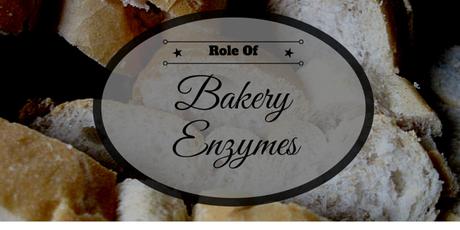 For over decades now, various enzymes like fungal alpha-amylases and malt have been utilised by bakeries to prepare different types of bread. Due to advancements made in biotechnology, several new exciting enzymes are available for modern bakeries. Enzymes play a very important role in bread making and can even be utilised as a replacement for potassium bromate.
For over decades now, various enzymes like fungal alpha-amylases and malt have been utilised by bakeries to prepare different types of bread. Due to advancements made in biotechnology, several new exciting enzymes are available for modern bakeries. Enzymes play a very important role in bread making and can even be utilised as a replacement for potassium bromate.
Wheat flour, which is one of the main ingredients to make bread, can be degraded using amylases for producing small dextrins that yeast will act upon. Also, there is a special kind of amylase capable of modifying flour at the time of baking in order to trigger an anti-staling effect.
Most of us are familiar with gluten. It is actually a combination of proteins needed in dough formation to create a large network. The said network holds gas within throughout dough proofing as well as baking. Therefore, its strength is extremely essential for ensuring quality of a bread raised with the help of yeast. Now, enzymes like xylanases, hemicellulases, oxidases and lipases can either indirectly or directly enhance strength of gluten.
Listed below are some enzymes and their functions:
- Amylase – speeds up fermentation process for obtaining uniform crumb structure as well as increased loaf volume
- Lipase – modifies natural lipids within wheat flour for strengthening dough
- Glucose oxidase – makes dough stronger, more elastic and drier
- Maltogenic alpha-amylases – enhances shelf life of cakes and breads
- Xylanase – conditions dough to make handling easier and also improves crumb structure
- Asparaginase – reduces formation of acrylamide during baking
- Protease – weakens gluten for imparting plastic properties needed in dough for preparation of biscuits
All of the enzymes that have been mentioned above possess their own substrate in dough of wheat flour. For instance, amylases work on starch, lipases on lipids and xylanase on pentosans. However, their overuse can have various detrimental effects on bread or dough. For example, too much xylanase or hemicellulase can make dough too sticky for a baker to handle. That is why, industrial bakery equipment suppliers suggest using lower dose of enzymes in combination for achieving as much of their beneficial effects as possible. These effects include securing optimum softness of crumb, appropriate bread quality, and so on.
Not quite long ago, it was revealed by studies that certain potato and cereal based products contain a high amount of acrylamide, which is possibly a carcinogenic substance. As has been mentioned already, however, the enzyme asparaginase was developed for reducing acrylamide formation in these kind of food products.

